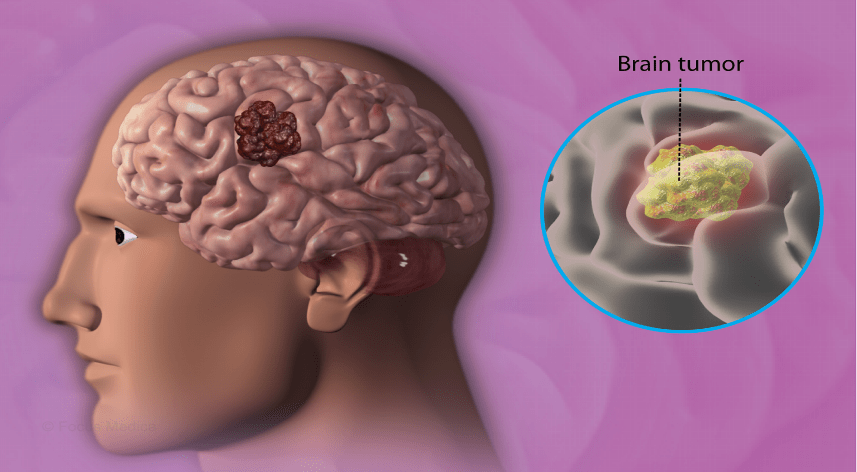Brain Tumor Surgery
Brain tumor surgery aims to remove or reduce the size of a tumor while preserving normal brain function. Surgical approaches depend on the tumor’s location, size, type, and the patient’s overall health.
- Craniotomy: This is the most common procedure where part of the skull is temporarily removed to access the brain tumor. After tumor removal, the skull is replaced.
- Biopsy: In some cases, a biopsy is performed to obtain tissue for pathological examination, especially if the tumor type is uncertain.
- Debulking Surgery: In cases where the tumor is not entirely resectable, debulking surgery removes as much of the tumor as possible to alleviate symptoms and improve the efficacy of other treatments like radiation or chemotherapy.
Latest Advances in Brain Tumor Surgery
Recent advancements in brain tumor surgery have greatly improved precision, safety, and outcomes. Some of the most notable innovations include:
- Intraoperative MRI (iMRI): Provides real-time imaging during surgery to guide tumor resection and ensure complete removal, reducing the risk of leaving behind residual tumor tissue.
- Fluorescence-Guided Surgery (5-ALA): A special dye is administered that makes tumor cells glow under a specific light during surgery, allowing for more precise removal of cancerous tissue.
- Laser Interstitial Thermal Therapy (LITT): A minimally invasive procedure that uses laser energy to destroy tumor cells, often used for deep-seated tumors.
- Genomic Profiling: DNA and RNA sequencing can help identify the molecular makeup of the tumor, allowing for more targeted therapies.
- Robotic-Assisted Surgery: Enables high precision during surgery, reducing human error and improving surgical outcomes.
Keyhole Surgery
Keyhole or minimally invasive brain surgery refers to using small incisions and specialized instruments to access brain tumors or lesions with minimal disruption to surrounding tissue. This type of surgery has several advantages over traditional methods:
- Smaller Incisions: Reduces trauma to surrounding tissues, leading to less postoperative pain and quicker recovery.
- Reduced Risk of Infection: Less exposure to external elements decreases the likelihood of infection.
- Faster Recovery: Patients typically have a shorter hospital stay and a quicker return to normal activities.
- Techniques: Common approaches include endoscopic surgery, neuronavigation-assisted surgery, and microsurgical techniques, which allow for precise removal with smaller, more controlled entry points.
Neuro Navigation
Neuro navigation is a sophisticated imaging and mapping technology that helps surgeons precisely locate and remove brain tumors. Similar to GPS, it uses real-time brain scans (MRI or CT) to guide surgical instruments during the operation.
- Preoperative Planning: Provides detailed 3D imaging of the brain, allowing for accurate planning of the surgical approach.
- Intraoperative Guidance: During surgery, the system continually updates the position of surgical instruments, ensuring they remain in the optimal location.
- Tumor Resection: This helps in the precise removal of tumors while avoiding critical areas of the brain responsible for motor skills, speech, and other important functions.
Neuro Monitoring
Neuro monitoring refers to the use of advanced technologies to track brain and nervous system function during brain surgery. This ensures that delicate structures, such as nerves, motor areas, and speech centers, are not damaged during the procedure.
- Electroencephalography (EEG): Monitors brain activity to detect abnormalities or changes in electrical patterns during surgery.
- Motor Evoked Potentials (MEP): Monitors motor function by sending electrical signals to the brain and recording the response, ensuring motor pathways are preserved.
- Somatosensory Evoked Potentials (SSEP): Monitors sensory pathways to ensure that sensory functions like touch and pain are not impaired during surgery.
- Cortical Mapping: In surgeries near areas responsible for speech, movement, or memory, surgeons may use direct cortical stimulation to map and identify critical regions, ensuring they are avoided during resection.
Causes of Brain Tumors:
The exact cause of brain tumors is often unknown. However, certain factors may increase the risk of developing a brain tumor:
- Genetic Mutations: Some inherited genetic conditions increase the risk of brain tumors.
- Radiation Exposure: Exposure to high doses of ionizing radiation (e.g., from radiation therapy for other cancers) can increase the risk.
- Family History: A family history of brain tumors or certain genetic conditions may raise the risk.
- Environmental Factors: While studies are ongoing, exposure to certain chemicals and toxins might contribute to the development of brain tumors.
Signs and Symptoms of Brain Tumors:
The symptoms of a brain tumor can vary depending on its location, size, and rate of growth. Common signs include:
- Headaches: Often worse in the morning or when lying down.
- Seizures: Sudden and uncontrolled electrical activity in the brain.
- Nausea and Vomiting: Due to increased pressure inside the skull.
- Vision Problems: Blurred or double vision.
- Cognitive Changes: Difficulty with memory, concentration, or speech.
- Motor Function Changes: Weakness or paralysis, difficulty walking or balancing.
- Mood or Personality Changes: Sudden irritability, depression, or behavioral shifts.
Treatment Options:
- Surgery: The primary treatment for brain tumors is surgical removal if possible.
- Radiation Therapy: High-energy beams, like X-rays, are used to kill or shrink tumor cells.
- Chemotherapy: Anti-cancer drugs are used to target and destroy tumor cells.
- Targeted Therapy: Drugs or other substances are used to target specific molecules involved in tumor growth.
- Immunotherapy: Enhances the body’s immune response to attack tumor cells.
- Stereotactic Radiosurgery (SRS): A type of high-dose radiation therapy that is precise and minimally invasive.
Consulting Dr. Tanusree Chakraborty:
Dr. Tanusree Chakraborty is an expert in neuro and spine disorders, making her well-suited to assess and treat brain tumors. Consulting with her can help determine the best course of action for a brain tumor based on its type, size, and location. She can provide insights on surgery, medical treatments, and post-operative care to ensure optimal outcomes.
Would you like to schedule a consultation or get more details on how to reach her clinic? Contact Us

